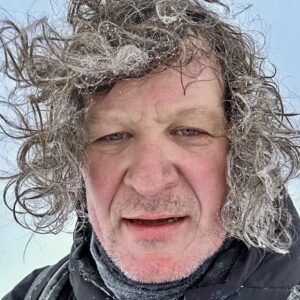Photographing the Patterns of Kenya’s Lake Magadi
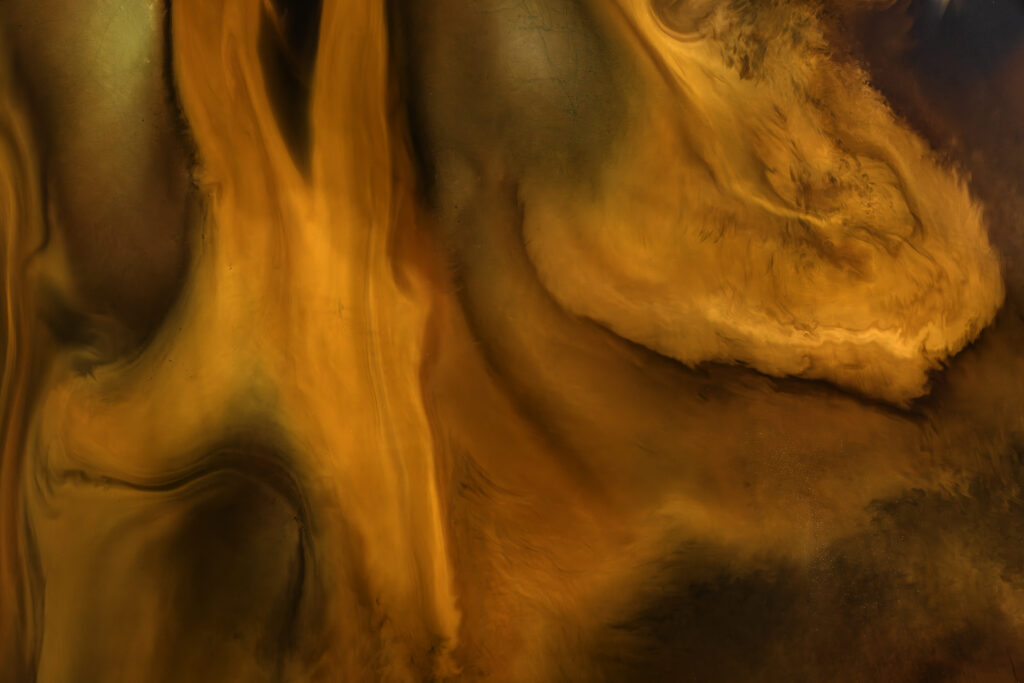
Nestled north of Kenya’s southern border, immediately adjacent to Tanzania, lies a truly extraordinary sight. Despite its appearance from ground level (where you would think there’s nothing to see), the colors and textures from the aerial view of Lake Magadi resemble a visual wonderland — something like a psychedelic dream.
The entire lakebed is covered in soda, a common ingredient in glass, paper, soap, and household detergents. This chemical also causes the algae to display vibrant and surreal hues, a phenomenon understood by chemists and admired by photographers.
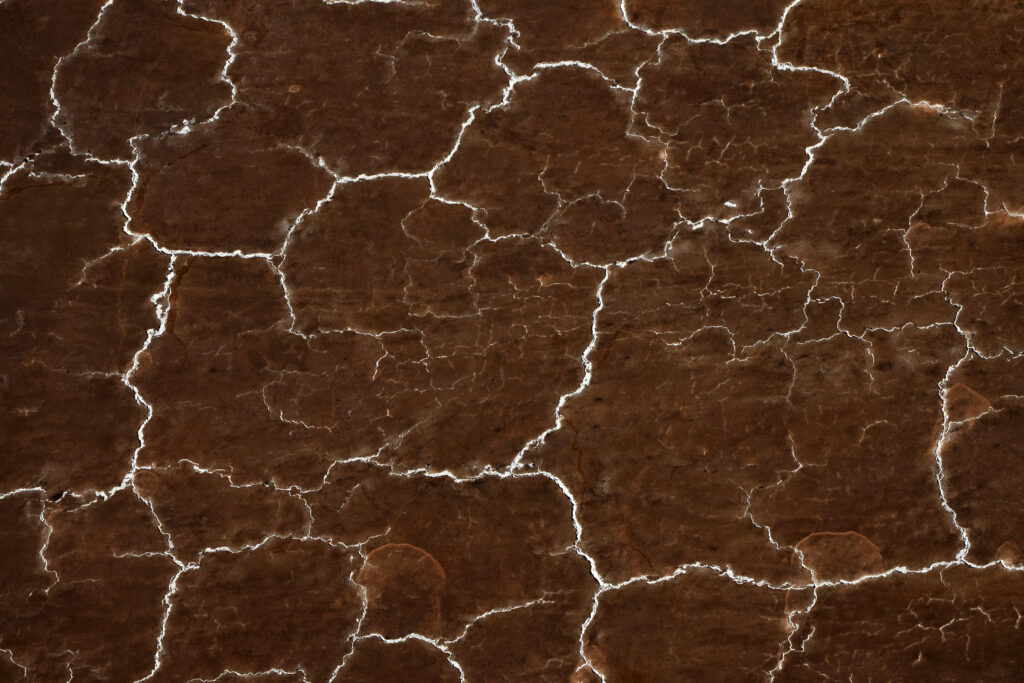
Throughout the day, the wind pushes the colored water in different directions, creating unique patterns that resemble everything from spirals to abstract art. Photographing these patterns takes some planning; there are limited accommodation options (such as Lentorre Lodge), and a helicopter is necessary for aerial shots. Drones aren’t allowed due to the close proximity of an airstrip. Even if you were able to get permission, drones are impractical because of the winds at the altitude you would be flying. I found the ideal elevation to be 2500 feet (600 feet above the lake) to get enough perspective to find patterns and organize them into a photograph.
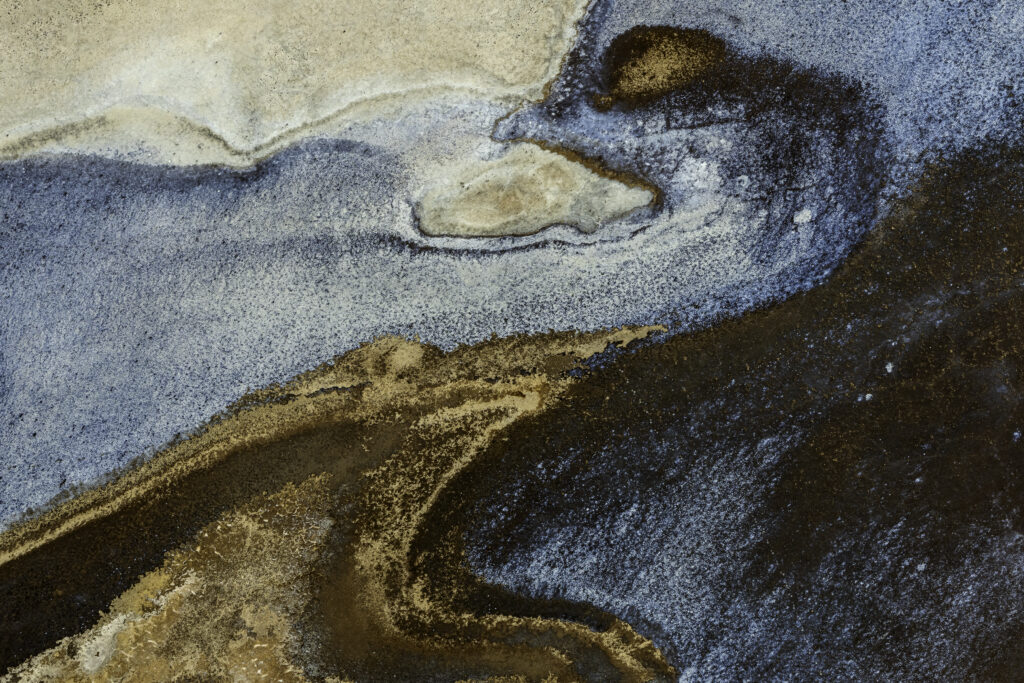
Staying at Lake Magadi means there’s a chance to experience something magical if you have a chopper handy. A quick 15-minute flight puts you over the lake, where you can look for patterns. Using a 100-400mm zoom lens with a polarizer and a shutter speed of 1/1250 sec is a winning combination. The helicopter has no doors, so it’s best to avoid bringing anything that could fall out. Take only one camera, leave lens hoods and caps behind, and make sure you have a large, empty memory card in your camera; changing cards in the air is an absolute no-no.
As you fly over the lake (early afternoon is usually best), you’ll come across various patterns that invite questions of composition. What do you want to show your viewers? In my experience, the images fall into three categories: aerial landscapes, abstracts, and flamingos.
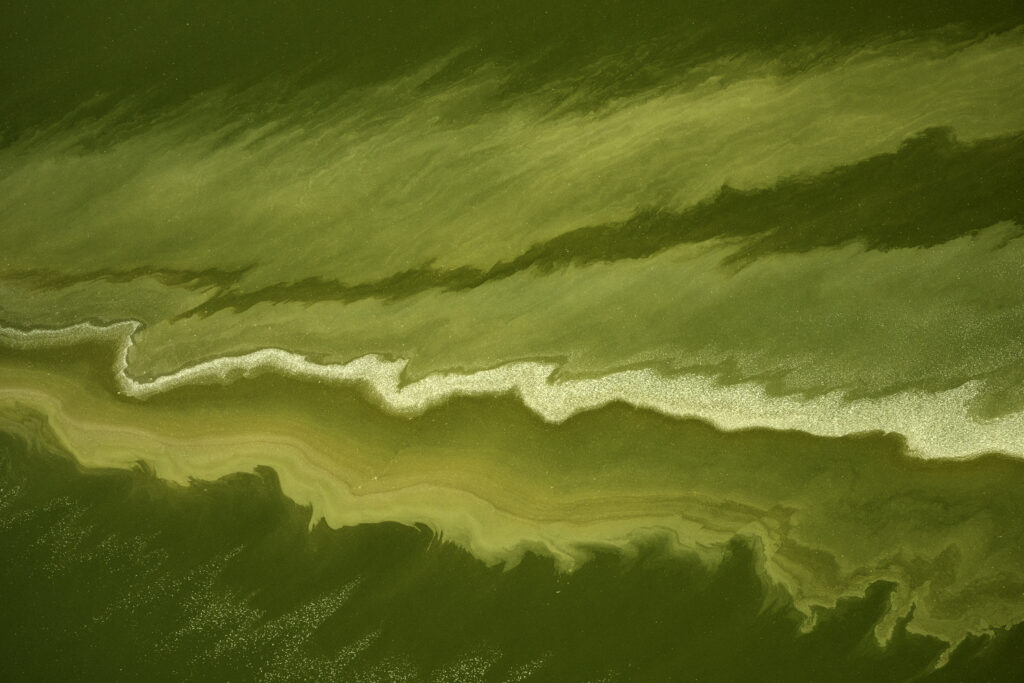
The Aerial Landscapes
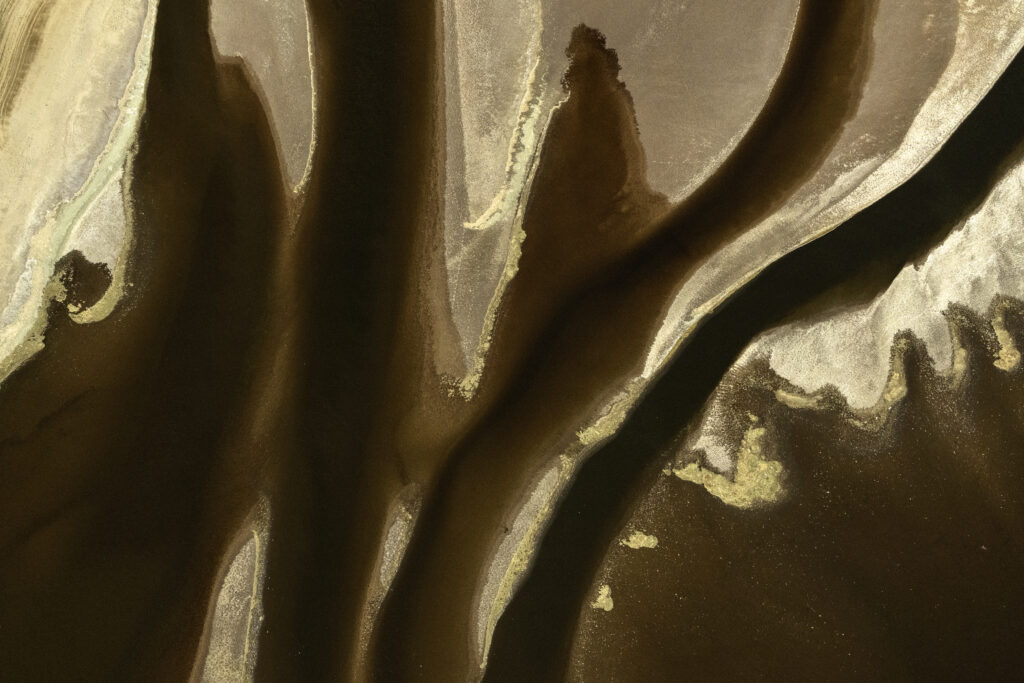
It can be challenging to differentiate between aerial landscapes and abstracts at times. My arbitrary opinion is that aerial landscapes include some form of land in the image. I prefer to focus on the areas where land meets water, particularly along the edges of the lake. The snaking patterns of streams are ideal places to look for design elements. The brilliant colors of the lake water create striking contrasts, both with the land and the dried salt deposits.
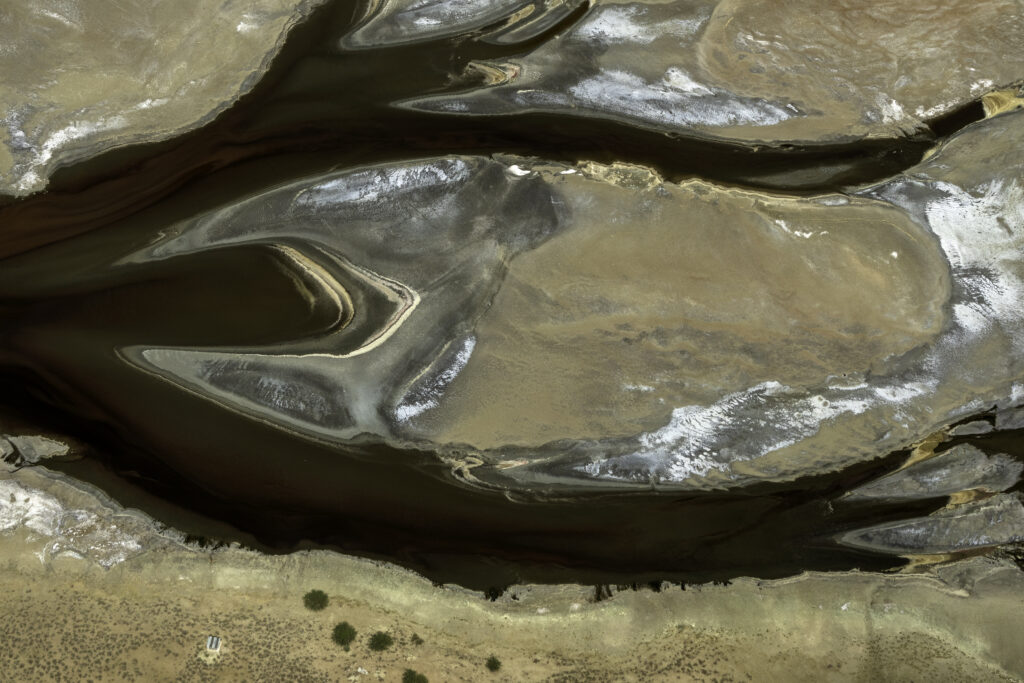
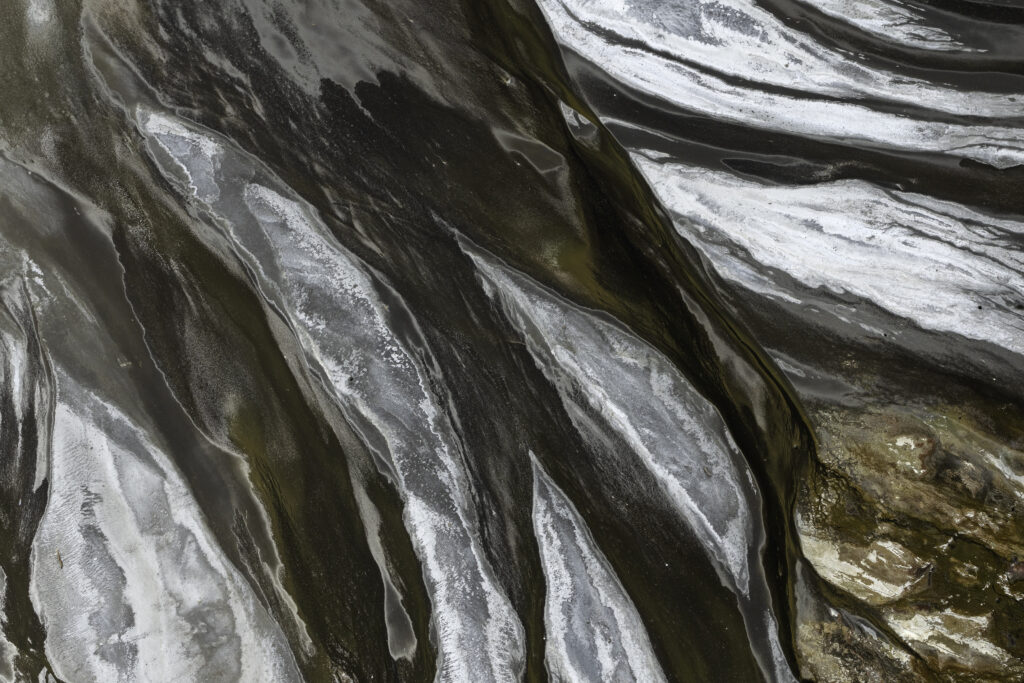
The Abstracts
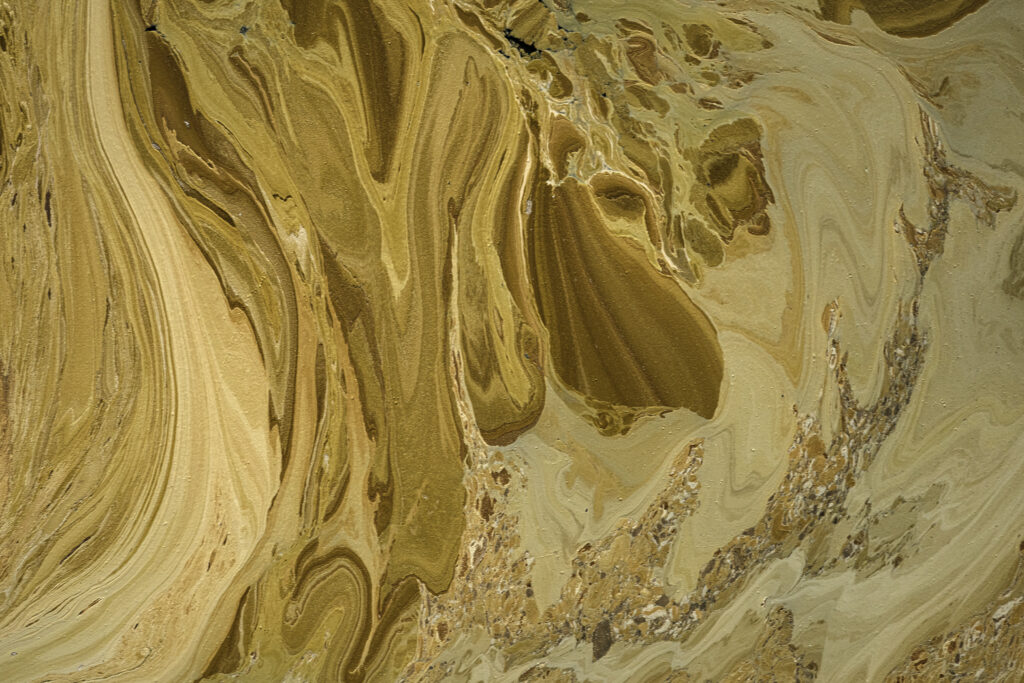
My true photographic passion at Lake Magadi is the abstracts. I remove all identifiable elements from the image to leave the viewer unaware of the scale and, sometimes, even the subject. Instead of looking to other photographers for composition inspiration, my muses are renowned abstract painters like Mark Rothko, Lee Krasner, and Yves Klein. Although abstract shots may seem to be abundant at first, locating them can be a challenge — taking the time to critically compose the image is crucial. It takes a while for the puzzle pieces to come together, so stay with it. I often discover unexpected elements in my photographs, from blocks of color to faces hidden in the swirls.
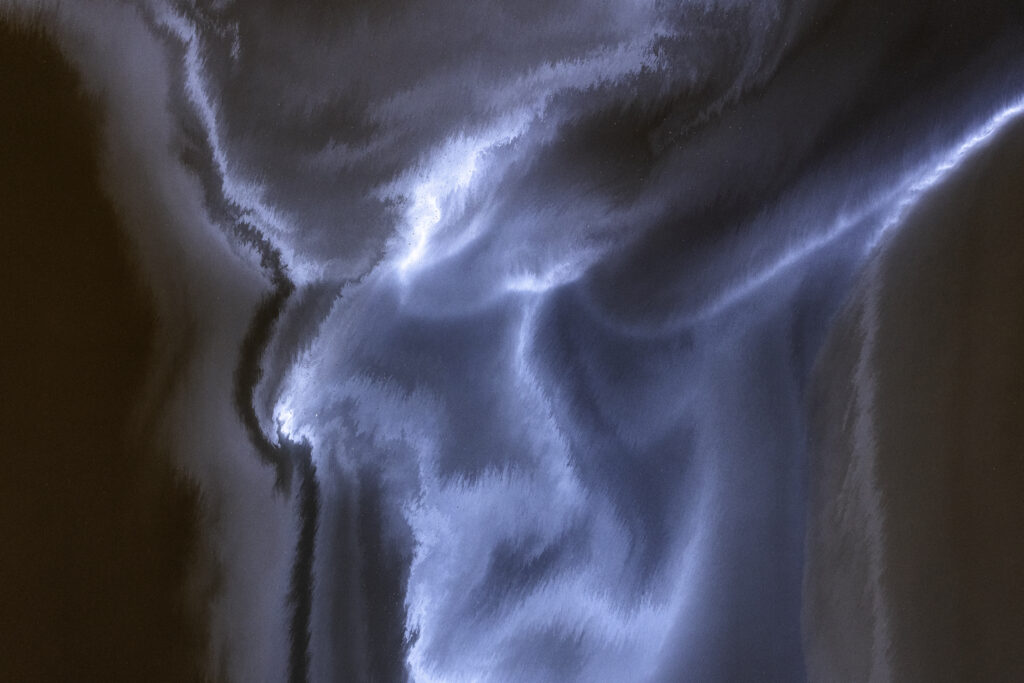
One of the key factors in photographing abstracts is paying close attention to the edges of the frame; the placement of lines and noticing what is in the corners can significantly impact the overall composition. To account for this, I tend to shoot a bit wider than what I think the eventual composition will be. This gives me more flexibility in post-production to crop and rotate the image to get exactly what I want.
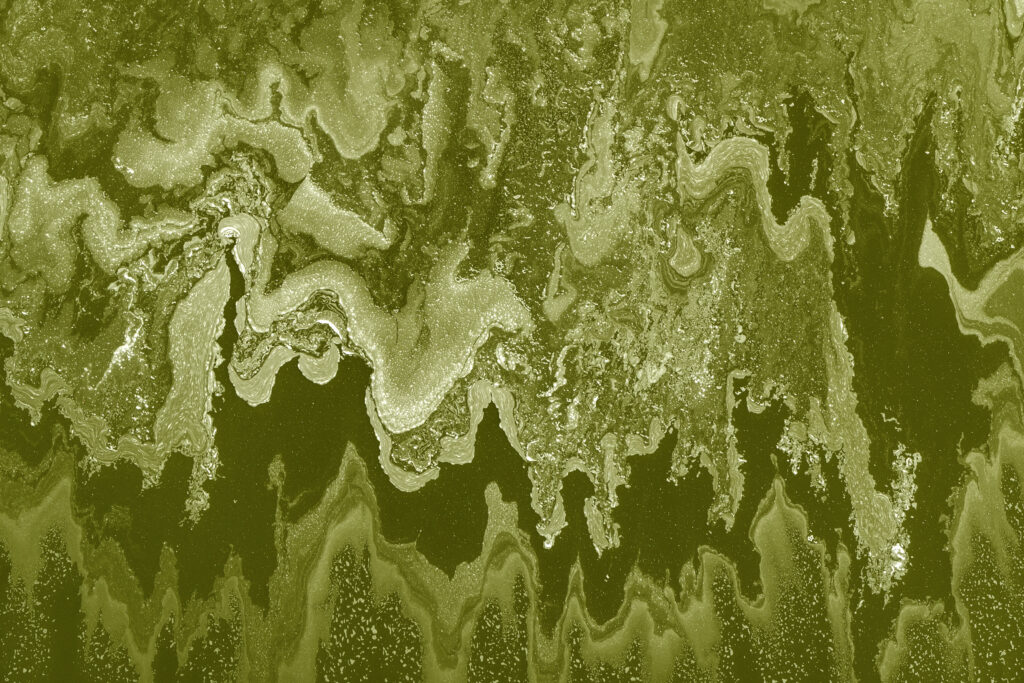
The Flamingos
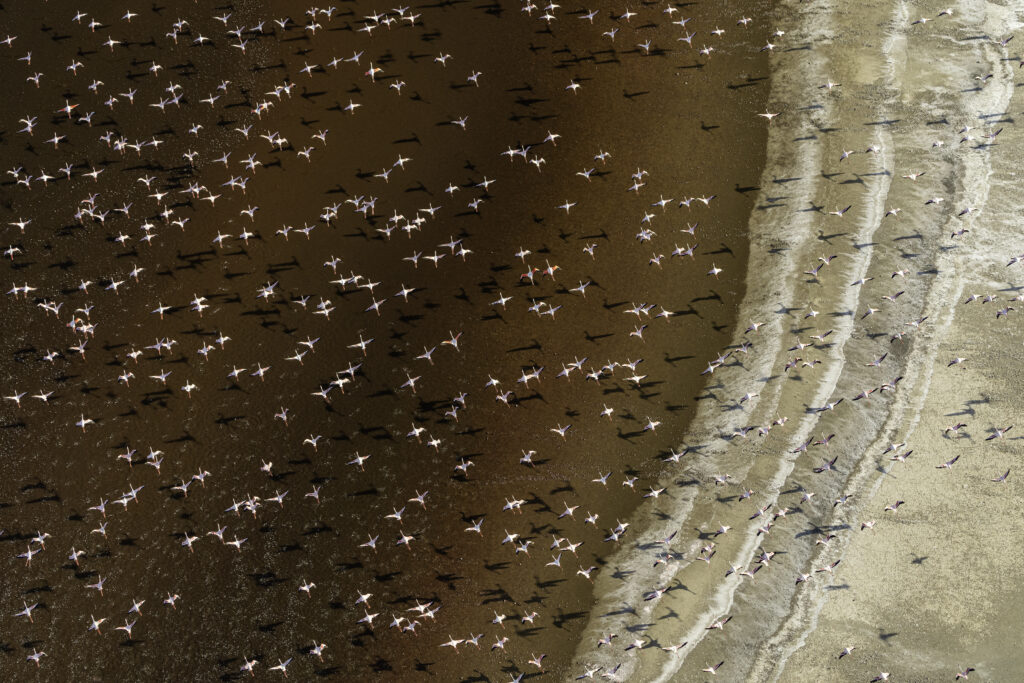
The lesser flamingos (the smallest species of flamingos) are a true highlight of Lake Magadi. Together with the population at neighboring Lake Natron, there are approximately 2.5 million birds in the area. The combination of the numerous white flocks against the backdrop of the lake’s colors and patterns makes for magical photographic opportunities. Be warned, however; the challenge of trying to frame a flock of birds from a moving helicopter over the lake patterns can feel more like a contact sport than an artistic endeavor!
One of the biggest struggles on this project was trying not to let other photographers’ work cloud my mind and hinder my creativity. As part of my process, I had looked at numerous photographs of the lake before arriving. Sometimes, this inspires me to look for new ways to photograph a place; other times, it limits my thinking, leading me to believe that there is only one way to photograph the place — and I get stuck. This time, I found myself fixated on a specific composition from another photographer. But thankfully, Mother Nature saved me from myself.
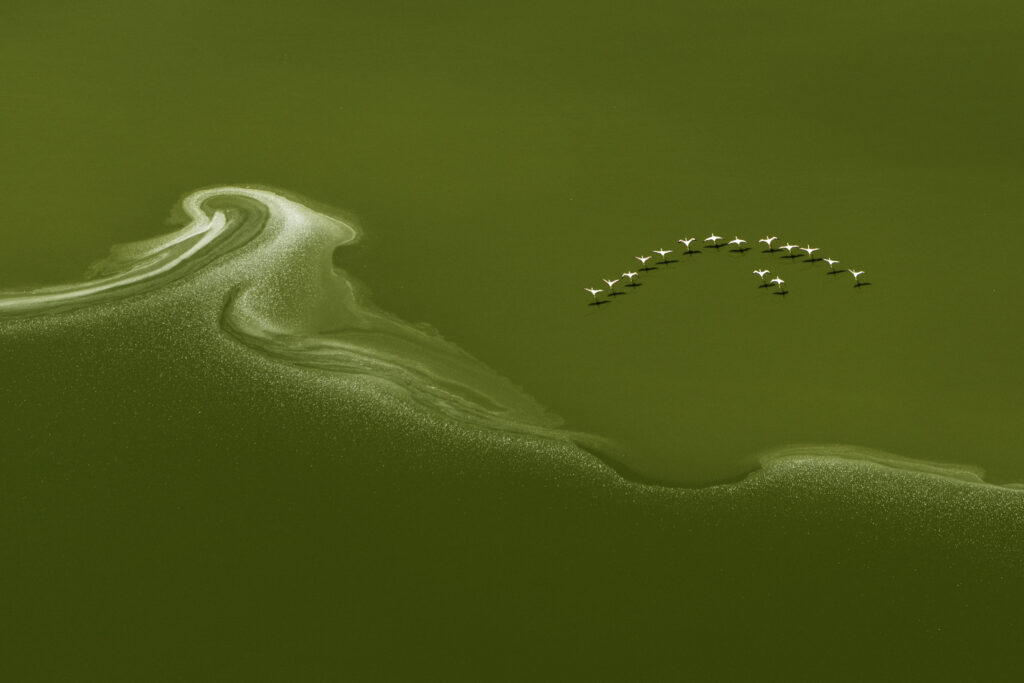
Unseasonal rains had altered the soda concentration in the water, resulting in unusual colors and patterns. Additionally, the rain had brought in an abundance of flamingos, meaning the birds were the main subject of the image instead of merely an accent. Though this was initially frustrating, it pushed me creatively, allowing me to get the other photographer’s images out of my head and come up with my own unique shots. In the end, I was able to make photographs that truly reflected my personal perspective and style.
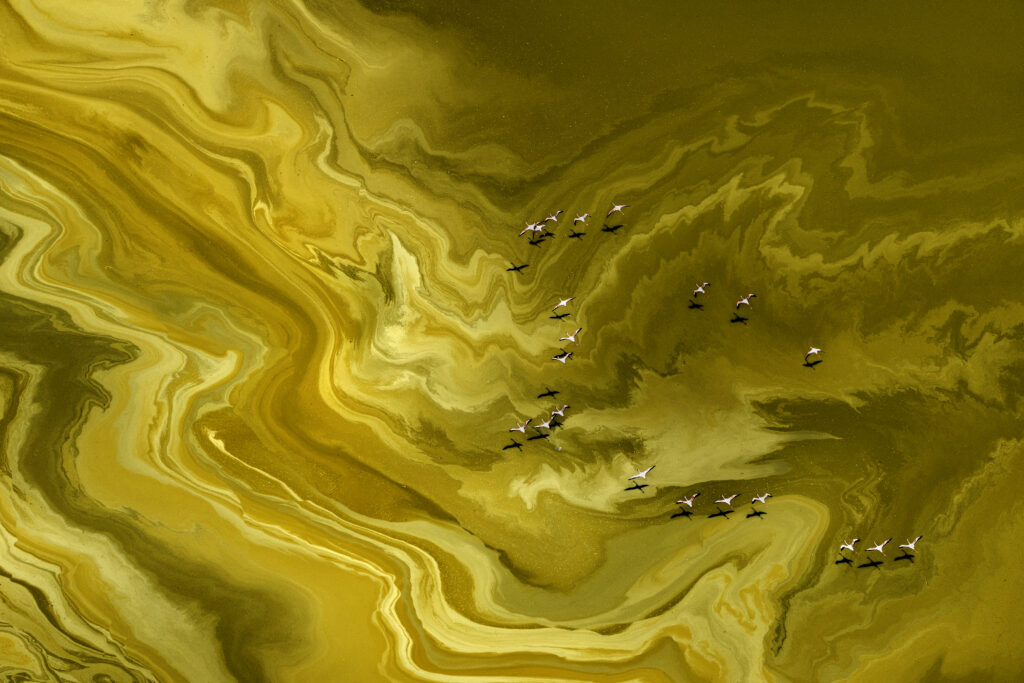
In Our Nature
With its beautiful colors, intricate patterns, and graceful flamingos, Lake Magadi has been a highlight of my 30-year journey as a nature photographer. It felt like a final exam of sorts: a technical challenge requiring abstract compositions and quick captures of giant flocks of birds within a limited time. But it was so much more than that.
This experience served as a reminder of the importance of our work as nature photographers. Lake Magadi is a remote place that few people will have the chance to witness, especially from an aerial perspective. Devastatingly, however, a privately owned plant is mining the lakebed, slowly stripping it of its natural wonder and threatening its majesty.
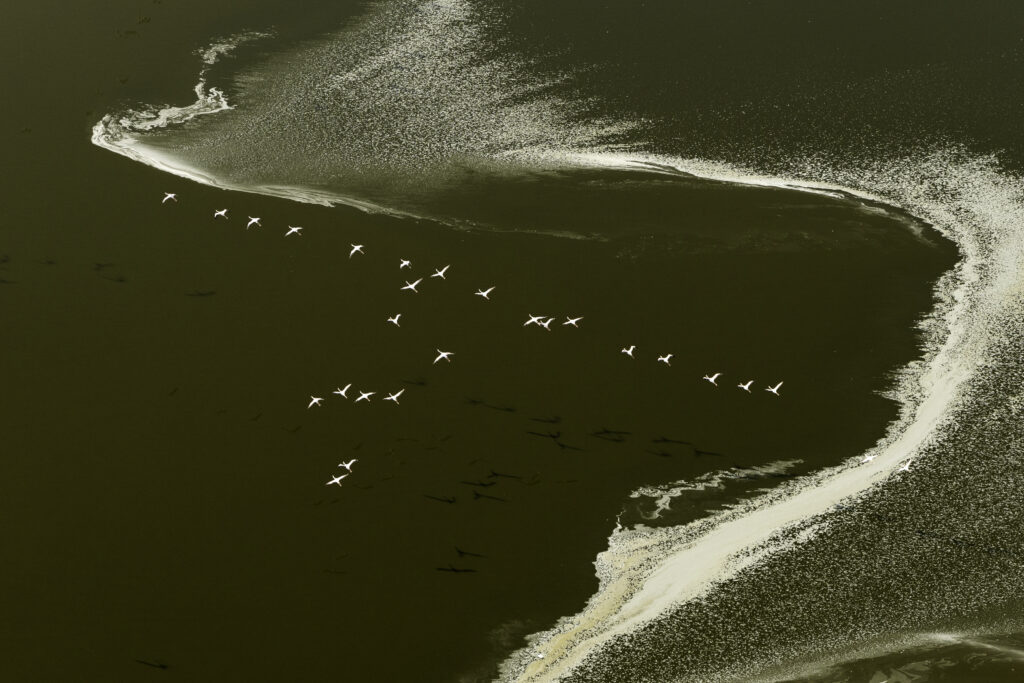
Nature photographers serve as our planet’s ambassadors, capturing and showcasing the incredible beauty of Earth to those who may not have the opportunity to see it firsthand. I believe every photograph of these awe-inspiring locations is made in the hope that maybe, just maybe, we will all think differently about the fragility of our delicate environment.


